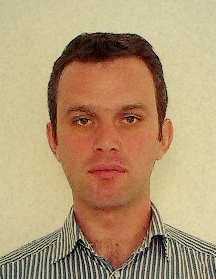Section AP (Antennas and Propagation)
INVITED PAPER:
Fractal antennas for super wideband applications
Luka Lazović, Branka Jokanovic, Vesna Rubežić, and Ana Jovanović
University of Montenegro, Faculty of Electrical Engineering,
Podgorica, Montenegro
Abstract:
This paper presents the design of original super-wideband printed fractal antennas that can be used in energy harvesting applications. The fractal antennas are based on the shape of a cardioid. A review and recent developments of fractal antennas are also presented to compare obtained results. Taking into account the expansion of information and communication technologies as well as the prediction of an enormous increase in the number of devices that will use wireless communications, moreover the Energy Harvesting concept and the IoT concept, it is clear that in these cases antennas play a key part, used both to communicate and power the devices. This means that it is necessary to design an antenna that can be used for Energy Harvesting, i.e., to cover all the bands with a high surface density of electromagnetic radiation and an antenna that covers all the necessary communication bands. Based on the described requirements, designed antennas meet the following criteria: ultra-broadband, electrically small antennas, planar and easy to manufacture, made on an inexpensive FR-4 substrate, and robust against material inhomogeneity and manufacturing errors.
The first proposed antenna is a uniplanar ultra-wideband fractal slot antenna that operates in the range of 1.8 GHz to 30 GHz and has extremely small electrical dimensions of only 0.21λ×0.285λ at the lowest frequency of 1.8 GHz. The second proposed antennas are ultra-wideband fractal monopole antennas operating in the 4 GHz to 30 GHz range. The antenna is electrically small, measuring 0.33λ × 0.25λ. Experimental verification confirmed the results obtained through simulations, while comparison with the literature established the advantages of the proposed antennas.
Short Bio:
|
|
Luka Lazović was born on October 7, 1987. in Nikšić. By defending the thesis “Optimization of power consumption in integrated Charge pump circuits” in 2010 he got his B.E.E. degree. His master’s thesis entitled “Performance Analysis of Adaptive Algorithms for the Synthesis of Diagrams of Radiation of Planar Antenna Arrays” and a Ph.D. thesis entitled “Antennas based on fractal geometry: analysis and design” was defended at the department for Microwave technics, Faculty of Electrical Engineering in Podgorica, in 2015 and 2022 respectively. At the Faculty of Electrical Engineering in Podgorica, since 2014, Luka has engaged as a teaching assistant on numerous subjects in the field of general electro technics and microwave technique. His areas of scientific interest include super wideband antennas, smart antenna systems, algorithms for the synthesis of radiation patterns, and 5G antennas. Luka is engaged in the MONUSEN (Montenegrin Centre for Underwater Sensor Networks) – HORIZON Twinning project and he has participated in a project of the first Center for Excellence in Montenegro (BIO-ICT) and bilateral project 5G-RECTenna. |

